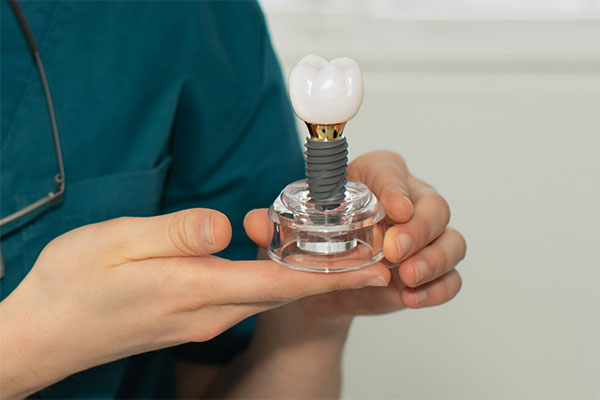Who Needs Invisalign Attachments?

Many people know that Invisalign® involves wearing a series of clear aligners that slowly straighten the teeth. However, not everyone knows about some of the tools that Invisalign uses to make that possible.
One such tool is Invisalign attachments. These tiny dots that can be attached to your teeth are often necessary for treatment. You may have read about them before beginning treatment, or a general dentist may have attached them without explaining what they are.
Nine common questions about Invisalign attachments
Here are common questions about attachments that will help patients understand how they work.
1. What are attachments and what do they do?
Invisalign attachments are small dots, or “buttons,” usually made from composite resin. The dentist will bond them onto specific teeth according to the treatment plan.
In short, attachments act as grips to help the aligners guide teeth into place. Different types of attachments will encourage the teeth to move in different ways. Some teeth will not need any attachments, while other teeth might require one or more.
2. What do attachments look like?
Attachments are made of composite resin, so they will match the color of the patient’s tooth. They will not be noticeably visible from a distance. Attachments come in various shapes, such as squares, triangles, and circles. Their shape, size, angle, and positioning are all specific to how the patient's Invisalign plan will move the tooth. The patient’s Invisalign trays will have a matching set of bumps. When inserted, the tray will snap into place around the attachments.
3. Who needs Invisalign attachments?
Basic Invisalign treatment plans may not require attachments. However, many Invisalign treatment plans will recommend or require them. They can help the teeth make more complex and advanced movements. Refusing attachments may make treatment impossible or make it take longer to achieve results.
4. Do attachments stain or damage the teeth?
The attachments will not cause any lasting effects as long as patients practice thorough oral health care. Patients should brush and floss regularly and before inserting their aligners.
Without proper oral hygiene, food particles and plaque can build up around the attachments and cause tooth decay. The attachments can also stain if the patient frequently drinks liquids like coffee, soda, and red wine.
5. Are attachments painful?
Since attachments are designed to help teeth move, the pressure that they apply may cause minor soreness and tenderness. However, the pain should never be severe. Attachments might also dig into the patient’s mouth when they remove their aligners. This pain is only temporary because the cheeks will form calluses to protect themselves and prevent future pain.
6. What happens if an attachment falls off?
Dentists bond attachments to the patient’s teeth, so it is rare for them to fall off. If it does happen, the patient must tell their dentist right away. Attachments are a vital part of treatment. Losing them may slow or negatively impact the effectiveness of the aligners.
7. How do dentists place Invisalign attachments?
Placing Invisalign attachments involves using a particular type of composite resin. The process usually starts with the dentists cleaning and prepping the patient’s tooth. A small amount of resin is applied to the tooth, and the attachment is placed on it. Ultraviolet light is used to harden the composite, which bonds the attachment to the tooth.
When it is time to remove the attachment, the dentist uses dental pliers to pull it off without causing any discomfort. It only takes a few seconds to pull out the attachment. Teeth are polished afterward to remove any leftover dental resin.
8. Will people be able to notice I have attachments?
No. Many people who opt to straighten their teeth with Invisalign do so because they do not want to compromise their smile during treatment. Most are looking for a discreet way to straighten teeth. Invisalign attachments are made with that in mind. They are designed to be virtually invisible in the mouth.
Attachments are made to be as tiny as possible, and the composite used is color-matched with the patient’s teeth. That camouflages them, making them almost impossible to notice.
9. Do attachments have any special cleaning requirements?
No, just make sure you brush and floss around the attachment daily since food particles and debris tend to accumulate around them.
Have more questions about Invisalign? Reach out!
Please contact our office if you want to learn more about attachments or Invisalign treatment overall. We are happy to answer your questions and help you on your journey to a straighter smile. Schedule a consultation today.
Request an appointment here: https://www.gardendentalartsny.com or call Garden Dental Arts at (718) 416-6367 for an appointment in our Brooklyn office.
Check out what others are saying about our dental services on Yelp: Invisalign in Brooklyn, NY.
Recent Posts
Are you considering Invisalign® as an option for straightening your teeth? This popular teeth straightening method, also known as clear aligners, is becoming increasingly popular thanks to its convenience and comfort. In this blog post, we will discuss the advantages and disadvantages of clear aligners and how to decide if it is the right teeth-straightening…
If you are dealing with teeth insecurities, Invisalign® can help you with that. Invisalign is a newly developed method of orthodontic treatment. It is an aligner system that steps away from traditional dental braces that use semi-permanent metal brackets and wires. Invisalign offers a more comfortable, convenient, and effective way to straighten your teeth.Invisalign only…
For individuals with crooked or misaligned teeth, a dental provider may recommend wearing braces as a corrective treatment. Patients may be able to choose between clear braces or metal braces, depending on the condition of the teeth and mouth. Though the overall goal of straightening the teeth is one reason many pursue braces, there are…
Part of preventative dental care is not only regularly maintaining your dental routine at home but also visiting your dentist twice a year. During this visit, they will look at the condition of your teeth and gums. Things they look out for are any sensitivities, bleeding, soft spots, or areas where bacteria are more likely…


